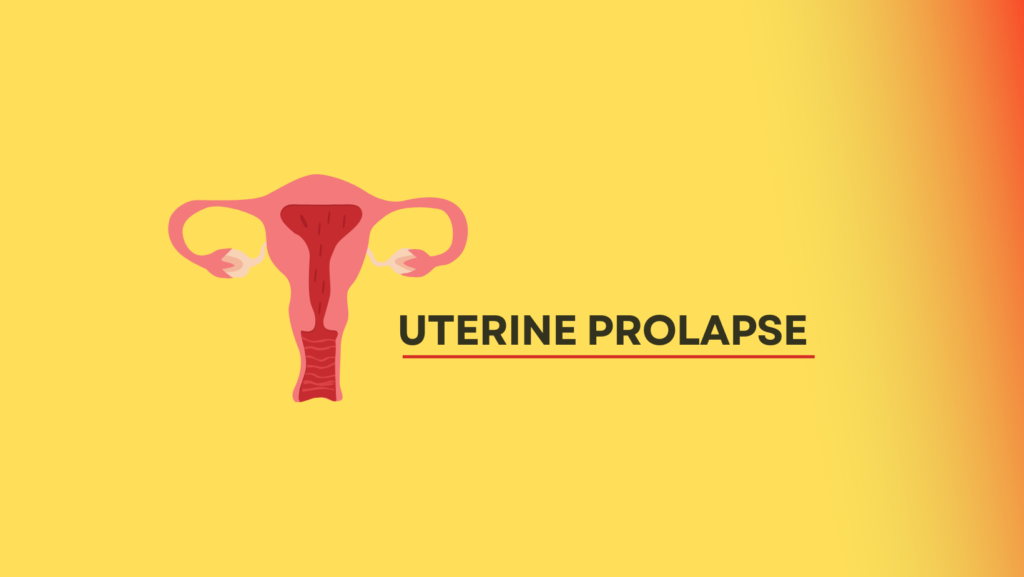Uterine Prolapse.
Uterine Prolapse
Genital prolapse :
Define : Descent of the pelvic organs from its normal position in the pelvis through the vagina is known as genital prolapse
Types of genital prolapse :
- Uterine prolapse
- Vaginal prolapse.
Uterine Prolapse
We have described in article :
Clinical features of uterine prolapse
Symptoms and signs of uterine prolapse
Investigations of uterine prolapse
Treatment of uterine prolapse

Symptoms of uterine prolaps :
- Feeling of something coming down per vagina.
- Backache
- Dyspareunia.
- Urinary symptoms:
- Difficulty in passing urine.
- Incomplete evacuation.
- Painful micturation.
- Stress incontinence.
- Retension of urine.
- Difficulty in emptying the rectum.
- Excessive white or blood stained vaginal discharge.
Signs of uterine prolaps :
Per vaginal examination: It depends upon presence, type and extent of prolapse.
A. 1st degree prolapse:
- Feeling of descent cervic on staining
- Speculum examination: Cervix will come down in the vagina on straining but will he within the introitus.
B. 2nd degree prolapse : .
. Inspection :
- The cervix will lay outside the introitus, it will be identified by the presence of external os.
- Rectocele may be present.
- Decubitus ulcer may be present.
.Speculum examination: Enterocele and rectocele may be seen in posterior vaginal wall.
• Palpation : Cervix will be felt in between the anterior and posterior vaginal walls at the level of the introitus.
Rectal examination : Rectocele may be present.
C. 3rd degree prolapse :
- Inspection:
- A mass is protruded from the vaginal introitus.
- Cystocele and rectocele may be present
- Ulceration in the prolapsed uterus.
.Palpation : At the level of the introinis, the anterior and posterior vaginal wall can be apposed and the fundus of the uterus will be felt outside the introitus
Investigations of uterine prolapse:
- Blood for TC, DC. ESR and Hb%
- Blood grouping, Rh typing and cross matching
- Blood urea, serum creatinine
- Blood sugar (fasting and two hours after meal)
- Urine RM/E
- Chest X-ray posterior and anterior view
- ECG (if age 40 years).
Treatment of uterine prolapse :
A. Conservative treatment:
- Improvement of general condition.
- Oestrogen replacement therapy may improve minor degree prolapse in postmenopausal women.
- Pelvic floor exercise in an attempt to strengthen the muscles
B. Surgical treatment :
- Age >60 years Vaginal hysterectomy with anterior colponhaphy and posterior colpoperineonhaphy.
- Age <40 years :
- Family complete Fothergill’s operation with tubectomy.
- Family incomplete Fothergill’s operation.

Thank you for another informative website. Where else could I get that kind of information written in such an ideal way? I have a project that I am just now working on, and I have been on the look out for such information.
Hi there! This post couldn’t be written any better! Reading through this post reminds me of my previous room mate! He always kept talking about this. I will forward this article to him. Pretty sure he will have a good read. Thank you for sharing!
Some genuinely nice and utilitarian info on this internet site, likewise I think the pattern holds fantastic features.
I reckon something genuinely special in this web site.